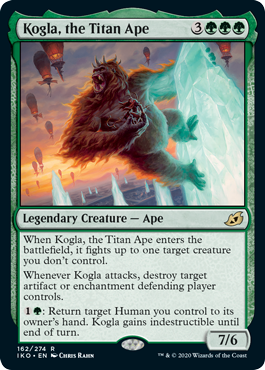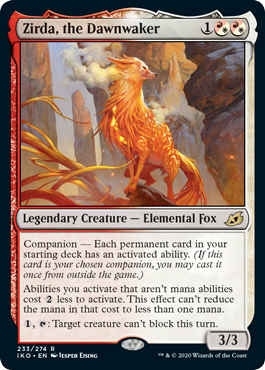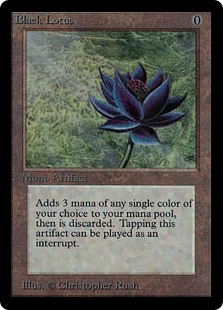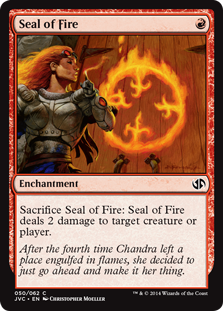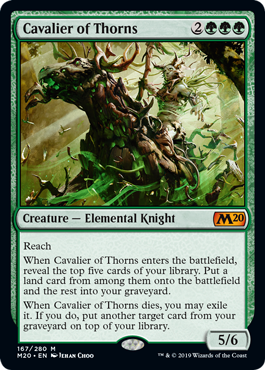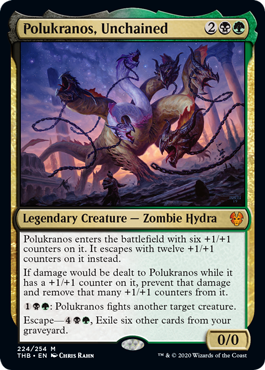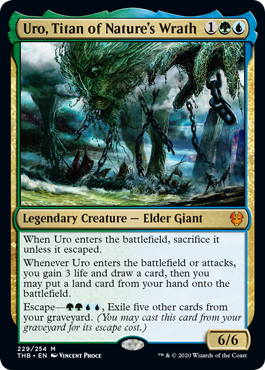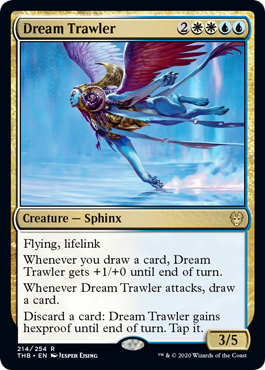The First Week of Standard with Ikoria: Lair of Behemoths
Companions from Ikoria: Lair of Behemoths are Taking Over Every Format
The Companion mechanic is extraordinarily powerful. While the deck building cost to use a particular companion can vary, the combination of consistency and the so-called “eighth card” cannot be exaggerated.
Lurrus of the Dream-Den seems to be the best companion on rate so far, and has already successfully crushed large events in Modern, Pioneer, Vintage, and Legacy.
We’re sure Lurrus will be even better in Standard.
Lurrus of the Dream-Den in Rakdos Sacrifice

Ikoria: Lair of Behemoths
Companions are so good it isn’t even clear which ones should go in which established archetypes! There are at least four Companions that might make sense in Rakdos Sacrifice, but two have risen to the top so far.
The Lurrus build of Rakdos Sacrifice forces some hard cuts. Woe Strider, Midnight Reaper, and the iconic Mayhem Devil all cost too much. Look for the Lurrus build to play a lot of two mana haste attackers like Dreadhorde Butcher or Robber of the Rich instead.
Perhaps more importantly, this build can [still] use Kroxa, Titan of Death’s Hunger. Because Kroxa is technically only two mana, it is not only eligible to be played, but can work a two-man game with Lurrus itself.
Other notable additions from Ikoria: Lair of Behemoths include Whisper Squad and Serrated Scorpion.
Whisper Squad starts on one but fills many additional, important, roles. If you do nothing else on turn two, you can activate the Whisper Squad to Squadron Hawk up another copy. It’s also a great “virtual three drop” for a deck that can’t play any real three drops… Kind of like a Wood Elves for Whisper Squads. And of course, if you have a ton of mana already on the battlefield, it can become a one-card army on the quick.
Serrated Scorpion is a great card to start with in this strategy, and awesome to sacrifice (even through combat) and re-buy with Lurrus. Patrick believes this card will inspire a Rakdos Burn deck in Modern.
Obosh, the Preypiercer in Rakdos Sacrifice
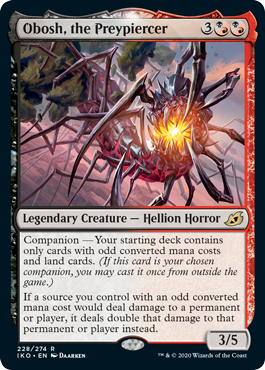
Ikoria: Lair of Behemoths
Competing for the allegiance of the resilient and resurgent Rakdos archetype is Obosh, the Preypiercer.
Obviously more expensive than Lurrus, Obosh offers immediate payoff the turn it hits the battlefield, but a harsh deck building cost.
No even costed cards means no Priest of the Forgotten Gods (making it a little harder to summon a five drop). The fact that three mana cards are available to this build (unlike the Lurrus one) makes the curve quite a bit higher. That is something to watch out for as these builds settle.
Gyruda, Doom of Depths Delivers a Whole-New Archetype
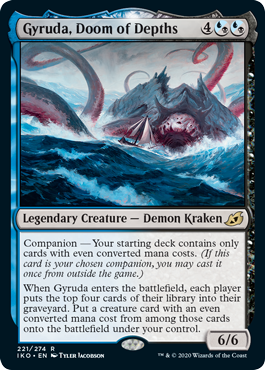
Ikoria: Lair of Behemoths
Here’s the thing: Lots of good mana acceleration is even-costed. Growth Spiral, Paradise Druid, new stuff.
If you get to six, you can pretty much always cast Gyruda… Because it’s a Companion and that’s how Companions work. You never have to draw it!
When you play Gyruda in this new deck / world / disaster for the opponent look for cards like Spark Double and Charming Prince to keep the party going. Your expectation will usually be to attack for lethal if you’re given the opportunity to untap.
Believe it or not… There is even more Ikoria: Lair of Behemoths in this week’s podcast!
Check it out:

